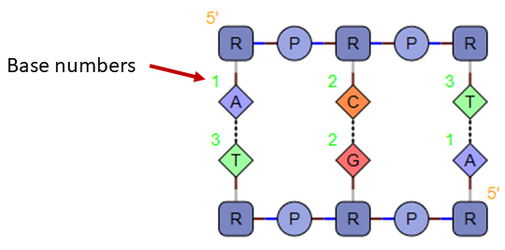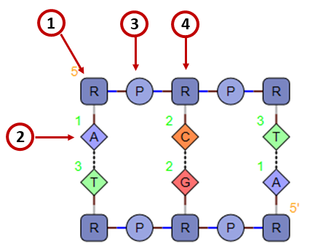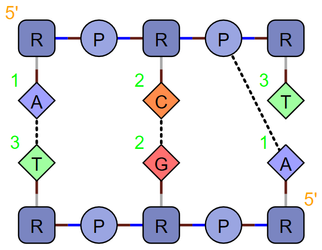Monomer numbering and hydrogen bonds
Hydrogen bonds can be added to a molecule (or pair of molecules) using section 2 and defining two paired monomers. For example:
RNA1{R(A)P.R(C)P.R(T)}|RNA2{R(A)P.R(G)P.R(T)}
$RNA1,RNA2,2:pair-8:pair|
RNA1,RNA2,5:pair-5:pair|
RNA1,RNA2,8:pair-2:pair
$$$V2.0
It is important to understand the numbering. An RNA strand has base numbers displayed in the HELM sketch, like this:
However, the pairing notation uses the monomer number which counts every monomer starting from the 5’ end.
This provides more flexibility.
In theory it is possible to construct a hydrogen bond between any two monomers like this (even though it is nonsense chemically):
RNA1{R(A)P.R(C)P.R(T)}|RNA2{R(A)P.R(G)P.R(T)}
$RNA1,RNA2,2:pair-8:pair|
RNA1,RNA2,5:pair-5:pair|
RNA1,RNA2,6:pair-2:pair
$$$V2.0
Note – at present the webeditor does not support hydrogen bonds to peptide polymers, even though these are valid in the HELM notation. This is something we will address when we have the resources.


